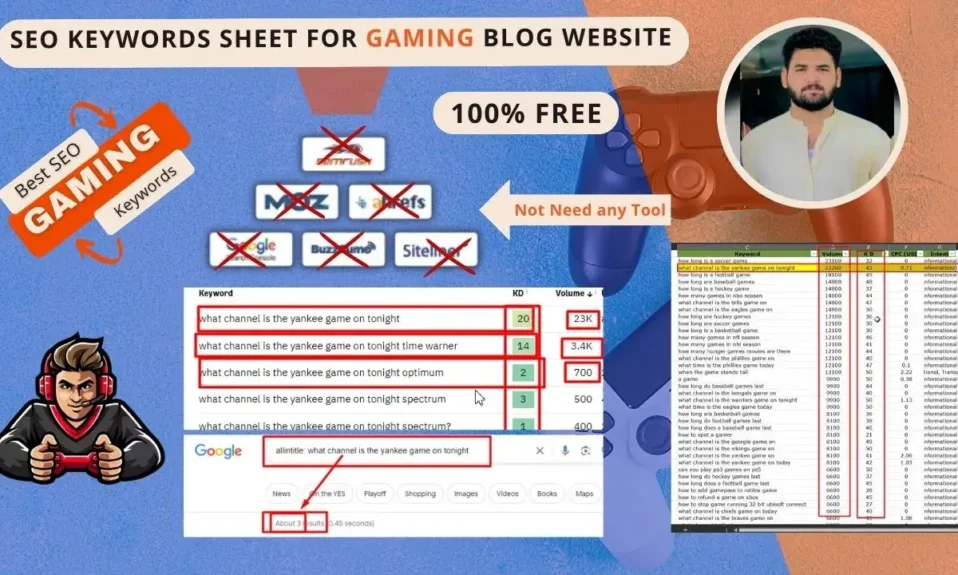
In today’s digital age, having a strong online presence is crucial for any fitness business to thrive. This article delves into the world of Search Engine Optimization (SEO) for fitness websites, uncovering the significance of SEO in boosting your fitness business and guiding you through the process of achieving search success.
Importance of SEO for Fitness Websites:
SEO plays a pivotal role in the success of fitness websites. By optimizing your website for search engines, you increase its visibility, reach, and accessibility to potential customers. A well-executed SEO strategy can attract more traffic, enhance brand awareness, and ultimately drive higher conversion rates.
How SEO can Boost Your Fitness Business:
A strategically crafted SEO plan can do wonders for your fitness business. It can elevate your website’s rankings on search engine results pages (SERPs), bringing it to the forefront when users search for fitness-related keywords. With increased visibility, your website becomes more discoverable, attracting targeted audiences, and translating them into loyal customers.
Understanding Fitness SEO:
What is Fitness SEO and How it Differs from General SEO:
Fitness SEO is a specialized branch of search engine optimization that focuses on enhancing the online presence of fitness websites. It involves tailoring SEO strategies to suit the unique needs of the fitness industry, targeting specific fitness-related keywords, and catering to the interests of fitness enthusiasts.
The Role of Keywords in Fitness SEO:
Keywords act as the foundation of any SEO campaign. In the fitness realm, identifying the right keywords is paramount to success. This includes terms like “workout routines,” “healthy diet plans,” and “fitness classes,” which resonate with your target audience and align with your fitness offerings.
Key Metrics to Measure Fitness Website’s SEO Performance:
To gauge the effectiveness of your SEO efforts, monitoring key metrics is essential. Metrics such as organic traffic, bounce rates, and conversion rates provide valuable insights into your website’s performance, allowing you to refine your strategies and improve your online visibility.
Keyword Research for Fitness Websites:
Identifying High-Impact Fitness Keywords:
Conducting comprehensive keyword research is the first step towards unlocking the potential of your fitness website. Employing tools like Google Keyword Planner and competitor analysis can help you pinpoint high-impact keywords that are less competitive yet highly relevant to your fitness niche.
Long-tail vs. Short-tail Keywords: Which Ones to Target?
Balancing your keyword strategy between long-tail and short-tail keywords is crucial. Long-tail keywords target specific user queries and have less competition, while short-tail keywords encompass broader topics and reach a wider audience. Striking the right balance can maximize your website’s visibility.
Utilizing Local SEO for Fitness Businesses:
For fitness businesses with physical locations, local SEO is a game-changer. Optimizing your website for local search ensures that your fitness center appears in local map results and directory listings when potential customers search for fitness services in your area.
On-Page SEO Strategies:
Crafting SEO-Friendly Fitness Content:
Creating compelling and informative fitness content that aligns with your target keywords is vital. Content should be well-structured, engaging, and backed by research to establish authority in the fitness domain.
Optimizing Meta Tags, URLs, and Headers:
Meta tags, URLs, and headers provide critical signals to search engines about the content of your web pages. By optimizing them with relevant keywords and ensuring they accurately reflect the page’s content, you improve your chances of ranking higher on SERPs.
Leveraging Internal Linking for SEO Benefits:
Internal linking is an often overlooked but powerful SEO strategy. By interlinking relevant pages within your website, you can distribute link authority, improve user navigation, and increase the visibility of your important pages.
Off-Page SEO Techniques:
Building Quality Backlinks for Fitness Websites:
Backlinks are like endorsements for your website’s credibility. Acquiring quality backlinks from reputable fitness-related websites can boost your website’s authority, helping it rank higher in search results.
Social Media Strategies to Enhance SEO:
Leveraging social media platforms is crucial for promoting your fitness website and engaging with your target audience. Social signals also play a role in SEO, so regularly sharing valuable content can positively impact your search rankings.
Engaging in Fitness Influencer Marketing:
Collaborating with fitness influencers can amplify your brand’s reach and credibility. Influencers can promote your fitness products, services, and content, attracting a broader audience and generating valuable backlinks.
Technical SEO for Fitness Websites:
Website Speed and Performance Optimization:
A fast-loading website not only improves user experience but also influences search engine rankings. Optimize images, minify code, and leverage caching mechanisms to enhance your website’s loading speed.
Mobile-Friendly Fitness Websites for Better Rankings:
With the majority of internet users accessing content through mobile devices, having a mobile-friendly website is imperative. Mobile responsiveness is a significant ranking factor in search algorithms.
Structured Data Markup for Fitness Content:
Implementing structured data markup using schema.org can help search engines understand your fitness content better. Rich snippets, such as recipe cards or event details, can enhance the appearance of your website on SERPs and attract more clicks.
Local SEO for Fitness Businesses:
Optimizing Google My Business for Local Search:
Creating and optimizing your Google My Business profile ensures that your fitness center appears in local map packs, complete with essential details such as contact information, operating hours, and customer reviews.
Local Citations and Directories for Fitness SEO:
Listing your fitness business in reputable local directories improves its visibility in local search results and reinforces your NAP (Name, Address, Phone) data consistency.
Customer Reviews and Testimonials: Their Impact on Local SEO:
Positive reviews and testimonials from satisfied clients not only boost your reputation but also influence your local SEO rankings. Encourage happy customers to leave feedback on review platforms like Google and Yelp.
Content Marketing and Fitness SEO:
Creating Compelling Fitness Blog Posts:
Maintaining a blog with informative, engaging, and shareable fitness content can attract organic traffic, encourage social sharing, and establish your fitness website as an authoritative resource.
Using Videos and Infographics to Boost SEO:
Diversifying your content with videos and infographics can cater to different learning styles and increase time spent on your website. Engaging multimedia content can also attract more inbound links from other websites.
Guest Posting and Outreach for Fitness Website Visibility:
Collaborating with other fitness-related websites through guest posting and outreach can expand your reach, drive referral traffic, and build valuable backlinks to your fitness website.
Tracking and Analyzing SEO Progress:
- Utilizing Google Analytics for Fitness Website Analysis:
Google Analytics provides invaluable insights into your website’s performance. Analyze traffic sources, user behavior, and conversion funnels to identify opportunities for improvement.
Measuring Conversion Rates and Goal Completions:
Setting up conversion tracking enables you to measure the effectiveness of your fitness website in achieving its goals, such as lead generation, newsletter sign-ups, or product sales.
Making Data-Driven Decisions to Improve Fitness SEO:
Interpreting data from various analytics tools helps you make informed decisions for refining your SEO strategies and optimizing your fitness website’s performance.
Voice Search and Fitness SEO:
Preparing Your Fitness Website for Voice Search:
Voice search is gaining popularity, and optimizing your fitness content for voice queries can give you a competitive edge. Use natural language and conversational tones in your content to match voice search queries.
Understanding the Impact of Voice Assistants on SEO:
Voice assistants like Siri, Alexa, and Google Assistant are changing the way people search for information. Understanding user intent and adapting your SEO strategies can cater to voice search users.
Implementing Voice Search-Friendly Strategies:
Optimize your FAQ pages, provide concise answers to common fitness-related queries, and include structured data markup for featured snippets to better serve voice search results.
Future Trends in Fitness SEO:
Predictions for the Evolution of SEO in the Fitness Industry:
SEO is a dynamic field, and staying ahead of trends is crucial for your fitness website’s success. Anticipate changes in search algorithms and user behavior to adapt your SEO strategies accordingly.
Preparing Your Fitness Website for Future Algorithm Changes:
Search engine algorithms are continually evolving. Building a robust and adaptable SEO foundation ensures your fitness website remains resilient to future updates.
Conclusion:
In conclusion, mastering SEO for fitness websites is a potent tool for achieving online success. By understanding the intricacies of fitness SEO, conducting comprehensive keyword research, implementing on-page and off-page strategies, optimizing for local and voice search, and staying ahead of future trends, you can propel your fitness business to new heights. Take action today, implement these top-notch fitness SEO tactics, and witness your website soar to the top of search engine rankings, attracting more visitors, and building a strong online presence that drives sustainable growth.










2 Comments